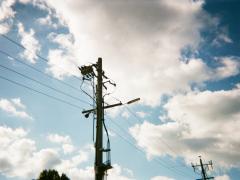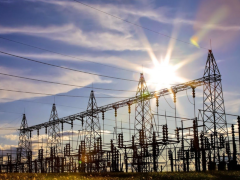by Koeberg Alert Alliance
On 15 January Eskom released a statement "Koeberg Nuclear Power Station Unit 2 going offline" which says that Koeberg Unit 2 “will on Monday 17 January 2022 be taken offline for a regular refuelling and maintenance outage that is scheduled for five months.”
Setting the disingenuous tone
Firstly, it is disingenuous to call this a “regular refuelling” outage. It is about as accurate as saying your car is going to the mechanic for refuelling, and by the way while busy filling the tank they will also replace the gearbox. The vast majority of the cost and the duration of the outage will be to do the refurbishment, so it is more accurate to call this a refurbishment outage.
Refuelling or refurbishment?
A refuelling outage takes just over four weeks, and this outage will be either 90 days, 150 days, 155 days or 165 days depending on which Eskom statement one chooses to believe. In the MYPD5 application submitted to the National Energy Regulator (Nersa), Eskom said the refurbishment outage would be 90 days. This 15 January statement says five months, previous statements by Eskom said 155 days, and a presentation by Eskom in November 2021 said it would be 165 days (nearly 24 weeks) before the unit could be connected to the grid again.
Is Koeberg reliable?
In describing the two Koeberg units, the Eskom statement reads: “Their safe and reliable operation is a significant contributor to meeting the country’s electricity demand.”
It is no surprise that the statement provides no details to back this up. Unit 1 was unavailable (offline) more than a third of the time in the years 2018, 2019 and 2021. In 2021 it was offline for more than half the year. Continuing with the car analogy, if your car was at the mechanic for six months during the year, would there be any way to honestly describe the car as reliable?
But Koeberg is safe, right?
If Eskom cannot be believed on the ‘reliable’ bit, can they be believed about its safety? The meaning of safe is very specific in the world of engineering. It does not mean that nothing can go wrong, it only means that the system complies with the relevant safety standards and regulations. By this definition the Fukushima plant was perfectly safe the week before the explosions started.
Aeroplanes are the safest machines in the world, but that doesn’t mean they never crash. Koeberg may be declared ‘safe’, but there is an evacuation plan in place for a reason – sometimes things go wrong. And in the case of a nuclear plant, that can be very badly wrong indeed.
Choosing the time of year…
The statement reads: “The Koeberg outages are planned at times of the year when the impact on the overall electricity supply is minimised.” This refurbishment will be in progress until at least December 2022, and it is incomprehensible how a 12-month process can be done ‘at times of the year’.
Just a precautionary measure?
The Eskom statement also reads “Replacing the steam generators is a precautionary safety measure.” This is hard to reconcile with a 2019 national report that reads in part: “The Plant Life Extension business case identified the capital expenditure that would be required for replacing three main components, namely the steam generators”. These can’t both be true.
It is clear that if the replacement was really required for safety reasons, there would be no need to make a business case in terms of the life extension.
What exactly is NOT being done?
This life extension refurbishment was planned in 2010 when it was budgeted at R20-billion. Now it is being done in 2022 and yet somehow is still going to cost R20-billion despite inflation and the rand falling to half of its 2010 value. It seems that more than half of the work is no longer going to be done which may have significant safety implications. Eskom has predictably not released details about which work is now going to be skipped to result in this reduction of the scope of work.
In conclusion
It is puzzling why Eskom would issue these contradictory statements which do nothing to help restore public trust in the organisation.
To avoid unnecessary load shedding the refuelling of Unit 2 should be completed and it should be brought back online before the end of February 2022. The refurbishment of Unit 1 should be put on hold until there has been more transparency from Eskom about why this work is being done, how long it will take, and what the true cost of the life extension project is.
For more information, please click here: https://koebergalert.org/













